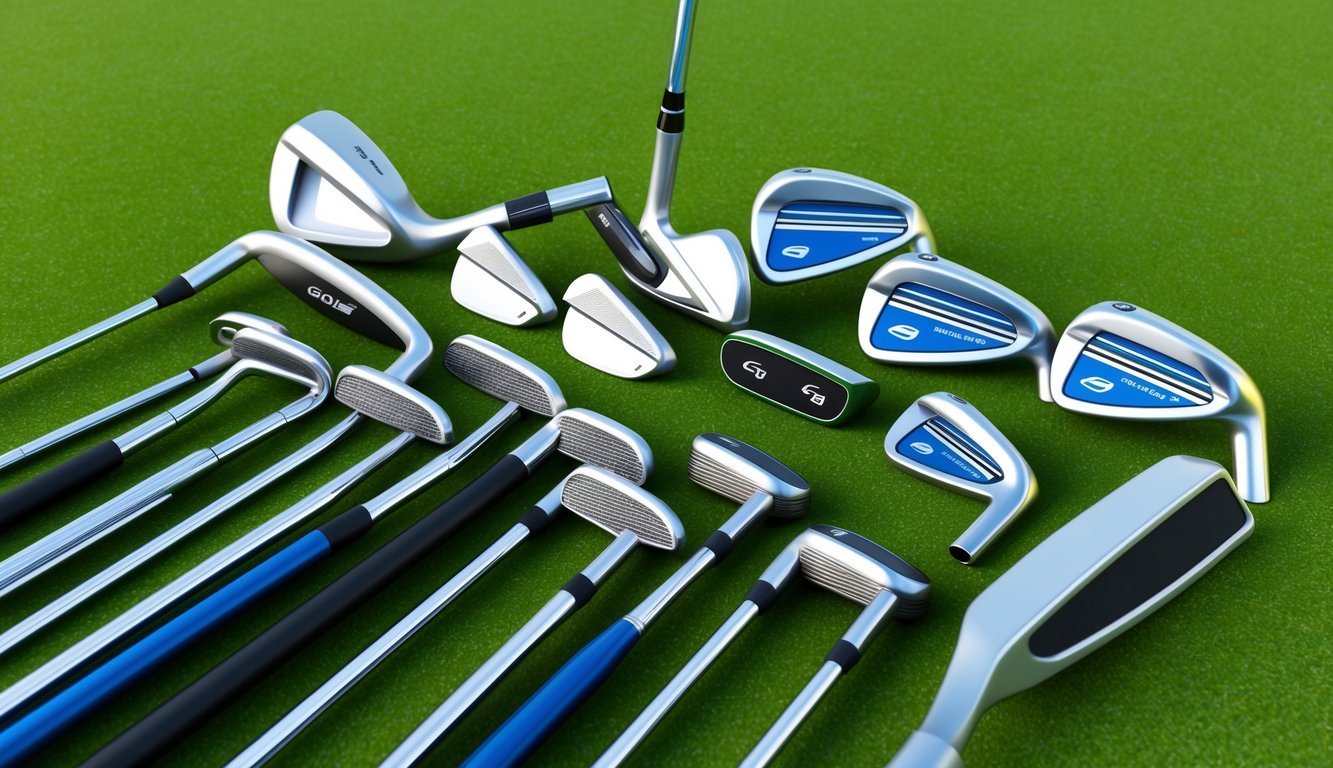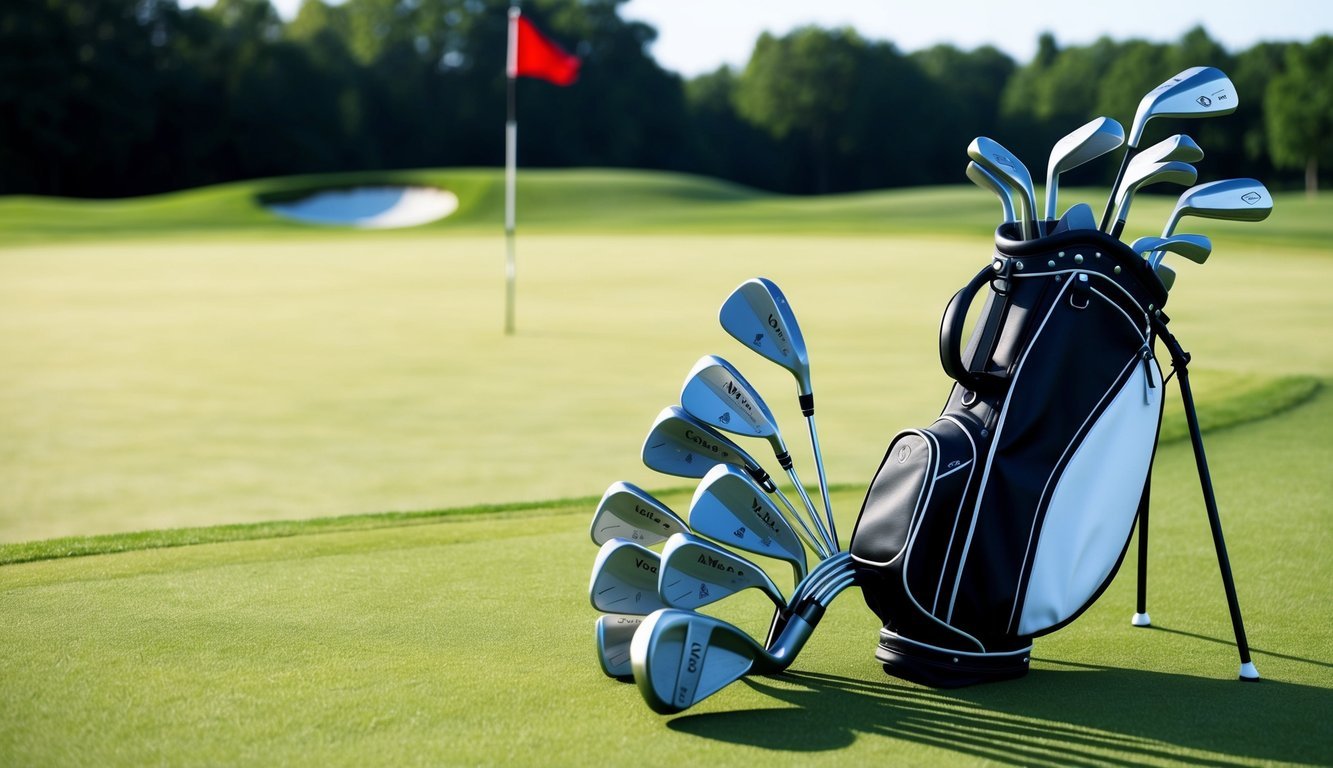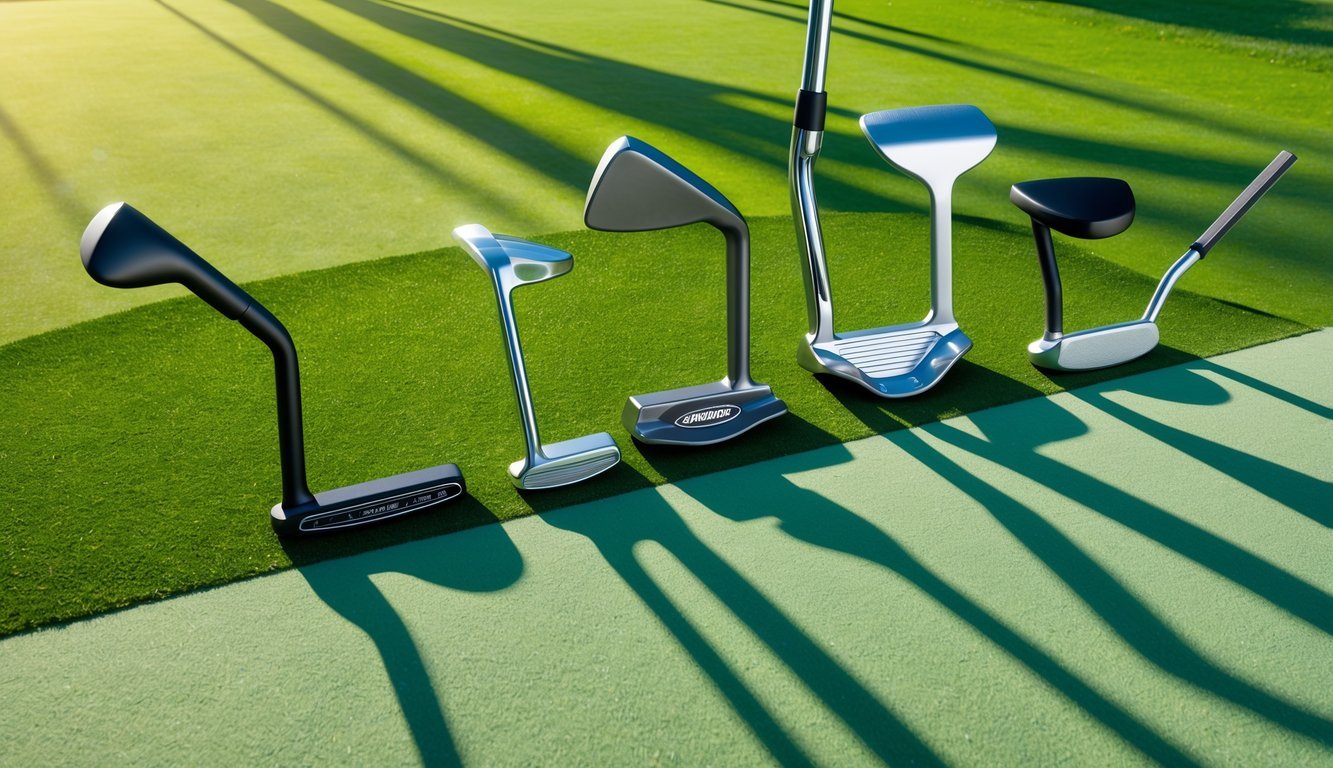When you step onto the golf course, you need to choose the right equipment.
Golf clubs are designed with specific purposes in mind, so your choice is a key factor in performing well.
From starting off with woods for those long drives to selecting the perfect putter for the greens, each club has its role.

Understanding the different types can make a significant difference in your game.
Whether you’re using fairway woods like the 3-wood for significant distance or opting for irons to get closer to the pin, the variety in club design caters to every playing scenario.
Hybrids blend the characteristics of woods and irons, offering versatility and ease of use.
With this information, you can embark on a journey of discovery that helps you improve your skills.
Delve into the role of wedges and the nuance of choosing the right putter to master your short game.
Gaining insight into the selection process empowers you to tailor your bag for any course or condition.
Key Takeaways
- Woods, irons, hybrids, wedges, and putters serve specific purposes.
- Selecting the right clubs impacts performance and enjoyment.
- Understanding club types enhances strategic play on the course.
Types of Woods
Golf club woods are key for covering long distances on the course.
They have large clubheads and longer shafts, making them ideal for tee shots and reaching the green on par 5 holes.
Different kinds of woods like drivers and fairway woods are essential for improving performance.
Drivers
Drivers are designed to achieve maximum distance off the tee.
They have the largest clubhead among the woods and a loft angle between 8 and 12 degrees.
This design is optimized for high swing speeds, allowing the ball to travel further down the fairway.
Typically made from lightweight materials such as titanium, drivers help you generate extra power with each swing.
The shaft length of a driver is generally longer than other club types, which helps in increasing the swing arc, thus boosting potential distance.
When aiming for a powerful shot on par 4 or 5 holes, the driver is the go-to club due to its capacity for long, high-velocity shots.
Fairway Woods
Fairway woods, notably the 3-woods and 5-woods, are often used for follow-up shots on the fairway.
They feature slightly higher loft angles, ranging from 15 to 22 degrees, helping to hit the ball high and cover great distances.
Fairway woods are versatile, useful for both second shots on longer holes and tee shots on shorter par 4s.
The design of the fairway wood includes a moderately sized clubhead, which strikes a balance between distance and control.
Their flexible shaft offers easier handling compared to drivers, enabling more precise swings, especially when navigating the fairway or approaching the green.
With fairway woods, you can improve performance by tailoring shots to different course conditions.
Understanding Irons and Hybrids
When choosing golf clubs, it’s crucial to consider the differences between irons and hybrids.
These clubs influence your ability to strike the ball at various distances and with varying levels of accuracy and control.
Irons
Irons are classic golf clubs, essential for precision and control across different parts of the course.
They come in various types, including blade irons and cavity back irons, each offering unique benefits.
Blade irons are favored by skilled players for their precision, while cavity back irons offer forgiveness for less experienced players.
Irons are categorized into short irons, mid-irons, and long irons, with each type serving specific purposes on the course.
Short irons are ideal for approach shots due to their higher loft, while mid-irons are useful for medium distances.
Long irons, on the other hand, provide extended reach, but are typically harder to master.
The versatility within iron clubs allows you to choose based on your skill level and gameplay strategy.
Explore more about iron types and their selection on GolfLink.
Hybrids
Hybrids combine the characteristics of irons and woods, offering excellent versatility and forgiveness.
These clubs are especially useful for players struggling with long irons, as they provide a higher launch angle and greater ease of use.
The design includes a rounded head, which helps in getting under the ball effortlessly, making them preferable for shots ranging from 180 to 200 yards.
Hybrids can bridge the gap between iron clubs, offering a solution when more precision than a wood but more forgiveness than an iron is needed.
This feature makes them attractive for both beginners and experienced golfers aiming for improvements in their game.
More information on various hybrid types can be found at Front Nine Golf.
Mastering the Wedges

Mastering golf wedges is essential for improving your short game and increasing precision in approach shots.
Each type of wedge serves a specific purpose, and understanding their differences can enhance your performance around the green.
Pitching Wedge
The pitching wedge is a versatile tool in your arsenal.
It typically features a loft ranging from 44 to 48 degrees, making it ideal for approach shots and chipping around the green.
You often use this wedge for shots that require precision when you’re closer to the green.
When practicing with a pitching wedge, focus on controlling the distance and spin.
Incorporating drills to hone your touch and feel for the ball will enhance your short-game skills.
This club is perfect for situations where you need a slightly lower flight with good rollout on the green.
Sand Wedge
A sand wedge is specifically designed for navigating bunkers and soft lies.
With a loft between 54 and 58 degrees, it has a higher bounce angle, helping the club glide through the sand without digging in.
This club is essential for executing bunker shots and for softer approach shots around the green.
When using a sand wedge, practice exploding the ball out of the sand with a confident swing.
The wide sole and bounce prevent the club from sticking in the sand, providing a smoother exit.
This club also works well for chips and pitches in fluffy lies, where you need the clubhead to slide easily through the ground.
Gap Wedge
The gap wedge, or approach wedge, bridges the distance between a pitching wedge and a sand wedge.
Usually, with a loft of 50 to 54 degrees, it’s designed for precise approach shots.
This wedge helps you fill the “gap” in distance that may exist in your set between other wedges.
You can utilize the gap wedge for full shots, pitches, and chip shots that demand precision.
It’s an excellent option for approach shots where you’re not quite at an ideal pitching wedge distance and need a higher trajectory but less loft than a sand wedge.
Focus on mastering the feel and control with this wedge to improve your versatility on the course.
Lob Wedge
The lob wedge is your go-to club for high, soft shots over obstacles such as bunkers or tall grass.
With a loft typically ranging from 58 to 64 degrees, it allows you to get the ball up quickly and land it softly on the green with minimal rollout.
It’s particularly useful when you need to clear a hazard and stop the ball quickly.
To master the lob wedge, practice delicate shots that require a soft touch and a high level of precision.
This wedge is designed for finesse, making it an essential tool for tricky lies where precision is crucial.
Working on this skill can greatly enhance your ability to control those high-risk, high-reward shots.
The Importance of Putters

When selecting a putter, understanding its impact on your game is crucial.
Putters play a significant role in distance control and consistency on the green.
In particular, the choice between blade and mallet putters can greatly influence your overall performance.
Blade Putters
Blade putters are classic in design, favored by many traditionalists.
Their sleek profile makes them ideally suited for golfers who have a straight putting stroke.
The minimalistic structure allows for excellent feedback and control, which can be particularly beneficial for skilled players seeking to fine-tune their precision.
The blade putter typically offers a smaller sweet spot, demanding greater accuracy.
This might present a challenge for beginners, but it’s perfect for those who prefer more control over the golf ball.
It’s also a lightweight option, making it suitable for individuals who like to feel the swing and impact distinctly.
Due to its design, the blade putter excels in touch and feedback, providing valuable insights into your putting technique.
If you appreciate finesse and precision, this style might be your preference for achieving that crucial distance control.
Mallet Putters
In contrast, mallet putters are known for their forgiving nature.
They usually have a larger clubhead, which can significantly aid in achieving balance and stability throughout your putting stroke.
This design makes it easier to maintain consistency, even if your putt is slightly off the center.
Mallet putters are ideal for players focusing on improving their stroke consistency.
The larger sweet spot enhances your ability to hit the ball cleanly, making it an excellent choice for beginners or those with a more arcing stroke.
These putters also often incorporate advanced weighting technology, promoting better distance control.
If you value consistency and forgiveness, the mallet putter could be a reliable tool to improve your short game.
Choosing the Right Clubs

Finding the right golf clubs is a key step in improving your game.
Consider factors like skill level and experience.
If you’re a beginner, you might prefer a set of clubs designed for newcomers, offering forgiveness and ease of use.
More experienced golfers may choose clubs that allow for greater control and precision.
Pay attention to your swing speed.
Clubs come with different shaft flex options, such as regular, stiff, or extra stiff.
A faster swing speed often requires a stiffer shaft, while a slower speed might benefit from a more flexible option.
Your height and arm length can also influence the length of the club you choose.
Club fitting is an excellent way to ensure your clubs match your personal needs.
A professional fitting can adjust elements like grip size, shaft length, and loft angle.
This can make a big difference in your comfort and performance on the course.
It’s essential to think about your preferences when selecting clubs.
Some players might enjoy the feel of steel shafts, which tend to be more durable, while others might prefer graphite shafts for their lighter weight.
Remember to have a variety of clubs in your bag to tackle different situations on the course.
A well-rounded set of clubs typically includes drivers, woods, irons, wedges, and a putter.
Test different types and brands to find what works best for you.
Invest in clubs that feel good in your hands and suit your playing style.
This thoughtful approach helps you make the most of your golf experience.

